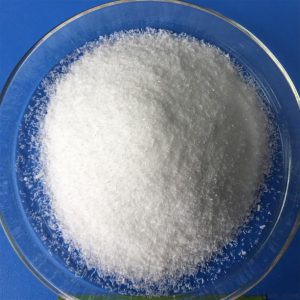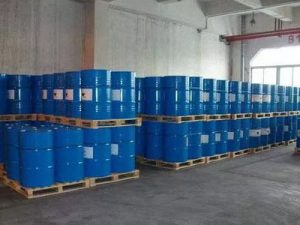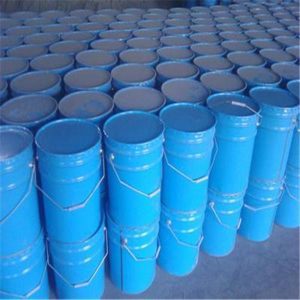One piece of literature says that antioxidants are all weak reducing agents. Why not strong reducing agents? Aren’t strong reducing agents more effective?
Everyone is learning that both hindered phenols and hindered amines are weak reducing agents, and that their hindered structure is not only to keep them from being oxidizing (offensive) even after they provide (or are called to lose) hydrogen atoms, but it is also to prevent such antioxidants or photostabilizers from being robbed of their hydrogen atoms by oxygen. This type of stabilizing aid with a hindered structure does not actively attack to consume oxygen, but waits until the polymer has been oxidized to alkyl radical RO- or alkyl peroxide ROOR’ to exert its antioxidant effect. In other words, these types of stabilizers are really an afterthought! However, there is a reason for this non-active anti-oxidizing mechanism. Imagine, in the presence of a large amount of oxygen occasions, such as in the use of the process, if the antioxidant is a strong reducing agent, then how many antioxidants are not enough oxygen consumption. Thus, the antioxidant from the treatment of “not sick” to treat “already sick”. In fact, the antioxidant itself also has the ability to regenerate. In this way, we add a small amount of antioxidant, you can protect the plastic from oxidation.

There is a situation where the contents of plastic packaging bottles cannot be oxidized, such as food and medicine. In this case, the antioxidant in the plastic container must be a “war stopper”. On the one hand, to improve the oxygen barrier capacity of the bottle, on the other hand, in the bottle of plastic to add a large number of antioxidants and organic matter with carbon carbon double bond to consume oxygen. At this time the antioxidant is active antioxidant. Such antioxidants are generally called deoxidizers (oxygen scavenger), not called antioxidants (antioxidants).
Antioxidants
Polymer materials, whether natural or synthetic, in the process of molding, storage, use will be due to a variety of reasons for structural changes, gradual oxidation and degradation of the loss of use value. In order to extend the life of polymer materials, inhibit or delay the oxidative degradation of polymers, the most effective measure is to add antioxidants. Antioxidant is an important branch of polymer stabilizers, widely used in rubber, plastics, chemical fiber polymer materials and is a chemical and food processing.
Antioxidant refers to the polymer oxidation and aging phenomenon can play a role in delaying a class of chemical substances. When only a small amount of its presence in the polymer system, you can delay or inhibit the polymer oxidation process, thus preventing polymer aging and extend its service life, also known as “antioxidant”.

Common varieties of antioxidants and selection principles
Adding a small amount of antioxidant in plastic processing can prevent or delay the aging process, thus extending the service life of plastic products.
The selection of antioxidants should be based on the type and model of plastic materials, processing equipment and process conditions, other chemical additives and add the amount of varieties, products, the use of the environment and the period of time and other factors to determine the synthesis.
Selection principles
Compatibility
Plastic polymer and antioxidant compatibility is often poor, usually at high temperatures will be antioxidant and polymer melt combination, polymer curing will be antioxidant molecules compatible in the polymer molecules in the middle. Within the dosage range of the formulation, the antioxidant is to be melted at the processing temperature. Special attention should be paid to the design of the formulation, the melting point or upper limit of the melting range of the selected solid antioxidants and light stabilizers should not be lower than the processing temperature of the plastic polymer.
Migration
Plastic products, especially the surface area to volume ratio (or mass ratio) of small products, oxidation occurs mainly on the surface of the product, which requires antioxidants to continuously migrate from the interior of the plastic product to the surface of the product and play a role.
However, if the migration speed to the surface of the product is too fast, the migration amount is too large, the antioxidant should be volatilized to the surface of the product in the environment, or diffusers and products in contact with the surface of the other media and the loss of this loss is in fact unavoidable, the design of the formula to be taken into account.
When there is a choice of antioxidant varieties, should choose a relatively large molecular weight, melting point of the appropriate high varieties, and to determine the amount of antioxidant to the most severe use of the environment as a prerequisite for the use of antioxidants.
Stability

Antioxidant in plastic materials should remain stable, in the use of the environment and high temperature processing volatile loss is small, no discoloration or color, no decomposition (except for processing heat stabilizing effect of the antioxidant), not with other additives unfavorable chemical reaction, no corrosion of mechanical equipment, is not easy to be extracted by the surface of the product of other substances.
Processability
When processing plastic products, adding antioxidants may change the viscosity of resin and screw torque. If there is a big difference between the antioxidant and the melting range of resin, it will produce the phenomenon of antioxidant bias flow or screw inhibition.
If the melting point of antioxidant is lower than the processing temperature by more than 100℃, the antioxidant should be made into a certain masterbatch before mixing with the resin to process the products, in order to avoid uneven distribution of antioxidant in the products and decrease of processing yield due to bias flow.
Environment and hygiene
Antioxidant should be non-toxic or low toxicity, no dust or low dust, no harmful effect on human body in the processing, manufacturing and use of plastic products, no harm to animals and plants, no pollution to air, soil and water system. For food packaging boxes, children’s toys, disposable infusion and other indirect or direct contact with the human body of plastic products, not only should be selected through the U.S. Food and Drug Administration (FDA) testing and licensing, or the European Commission decree permits the species of antioxidants, and the amount of addition should be strictly controlled within the maximum allowable limits.
Main products
★ Antioxidant 1010
White fluid powder, melting point 120~125℃, low toxicity, is a better antioxidant. It is more used in PP, it is a kind of auxiliary with high thermal stability and very suitable for use under high temperature conditions. In addition, it can also be used in most other resins. The general amount added is not more than 0.5%.
★ Antioxidant 1076
White or yellowish crystalline powder, melting point is 50~55℃, non-toxic, insoluble in water, soluble in solvents such as benzene, acetone, ethane and esters. It can be used as antioxidant for PE, PP, PS, PVC, PA, ABS and acrylic resins. It has the characteristics of good antioxidant, small volatility and washing resistance. The general dosage is not more than 0.5%.
★ Antioxidant 168
White crystalline powder, melting point 183~187℃. No coloring, no pollution, good volatility. It is auxiliary antioxidant and has good synergistic effect when compounded with main antioxidant 1010 or 1076. It can be used in PE, PP, PVC, PS, PA, PC, ABS and so on.
Antioxidant CA
White crystalline powder, melting point 180~188℃, low toxicity, soluble in acetone, ethanol, toluene and ethyl acetate. Suitable for PP, PE, PVC, ABS and PA resin. The general dosage is not more than 0.5%.
★ Antioxidant 164
White or light yellow crystalline powder or flake. Melting point is at 70℃, boiling point is around 260℃, non-toxic. It is used in a variety of resins and has a wide range of uses. More suitable for food packaging molding materials (PP, PE, PVC, ABS, polyester and PS). The general dosage is 0.01% to 0.5%.
★ Antioxidant DNP
Light gray powder, melting point about 230℃, easily soluble in aniline and nitrobenzene, insoluble in water. It is suitable for PE, PP, HIPS and ABS resins. In addition to antioxidant effect, it also has good heat stabilization and inhibits the influence of copper and other metals. The general dosage should not exceed 2%.
★ Antioxidant DLTP
White crystalline powder, melting point at about 40℃, low toxicity, insoluble in water, soluble in benzene, carbon tetrachloride, acetone. It is used as auxiliary antioxidant for PE, PP, ABS and PVC resins, which can change the heat resistance and antioxidant property of the products. The general dosage is 0.05%~1.5%.
★ Antioxidant TNP
Light yellow viscous liquid, solidification point lower than -5℃, boiling point greater than 105℃, odorless, non-toxic, insoluble in water, soluble in acetone, ethanol, benzene and carbon tetrachloride. Suitable for PVC, PE, PP, HIPS, ABS, polyester and other resins, good antioxidant performance in high temperature. The usage amount is not more than 1.5%.
★ Antioxidant TPP
Light yellow transparent liquid, freezing point 19~24℃, boiling point 220℃, soluble in alcohol, benzene, acetone. Suitable for PVC, PS, PP and ABS resin auxiliary antioxidant. The usage amount should be no more than 3%.
★ Antioxidant MB
Light yellow powder, melting point more than 285℃, soluble in ethanol, acetone, ethyl acetate, insoluble in water and benzene. Suitable for PE, PA and PP resin antioxidant; no pollution, no coloring, can be used for white or bright-colored products. The dosage is not more than 0.5%.
★ Antioxidant 264
Appearance is white crystal. Melting point 69~71℃; density 1.048 g/cm3(20℃); refractive index 1.4859(75℃). Soluble in methanol, ethanol, isopropanol, acetone, petroleum ether, benzene at room temperature; insoluble in water, glycerol, propylene glycol. Odorless, tasteless, with good thermal stability. As general-purpose phenolic antioxidant. Widely used in polymer materials.

